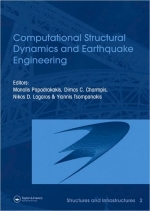Tab Article
The increasing necessity to solve complex problems in Structural Dynamics and Earthquake Engineering requires the development of new ideas, innovative methods and numerical tools for providing accurate numerical solutions in affordable computing times.
This book presents the latest scientific developments in Computational Dynamics, Stochastic Dynamics, Structural Dynamics and Earthquake Engineering in thirty-five self-contained contributions. The selected state-of-the-art chapters are revised and extended versions of the papers which were presented as plenary, semi-plenary and keynote lectures at the thematic COMPDYN 2007 Conference.
This volume will benefit researchers and engineering professionals working on structural dynamics, earthquake
engineering and computational mechanics. Readers will get acquainted with advanced computational methods and software tools, which can assist them in tackling complex problems in dynamic/seismic analysis and design. Moreover, technical fields involved.


